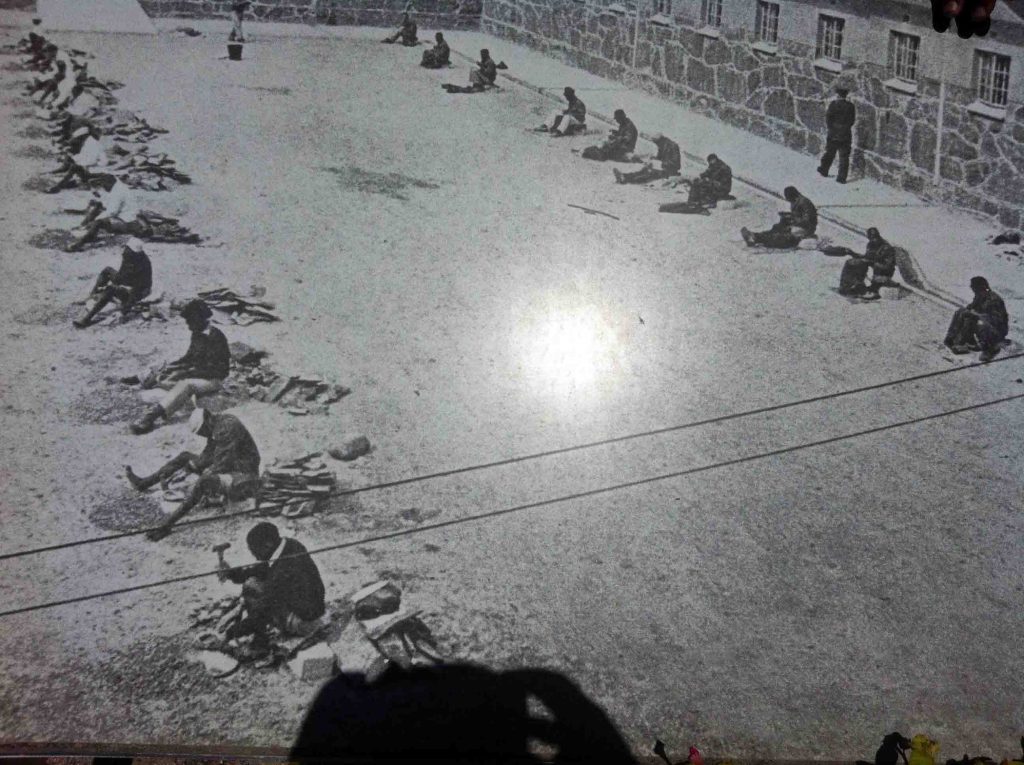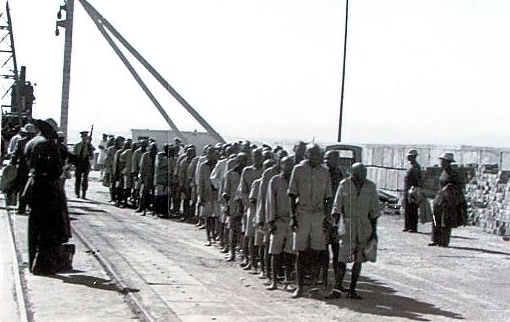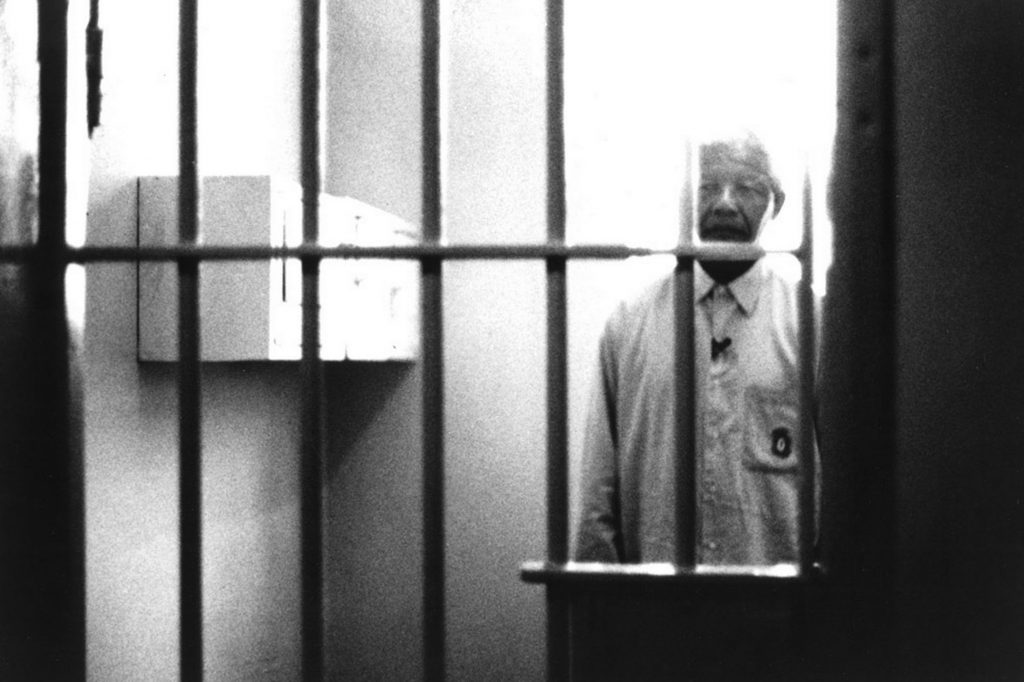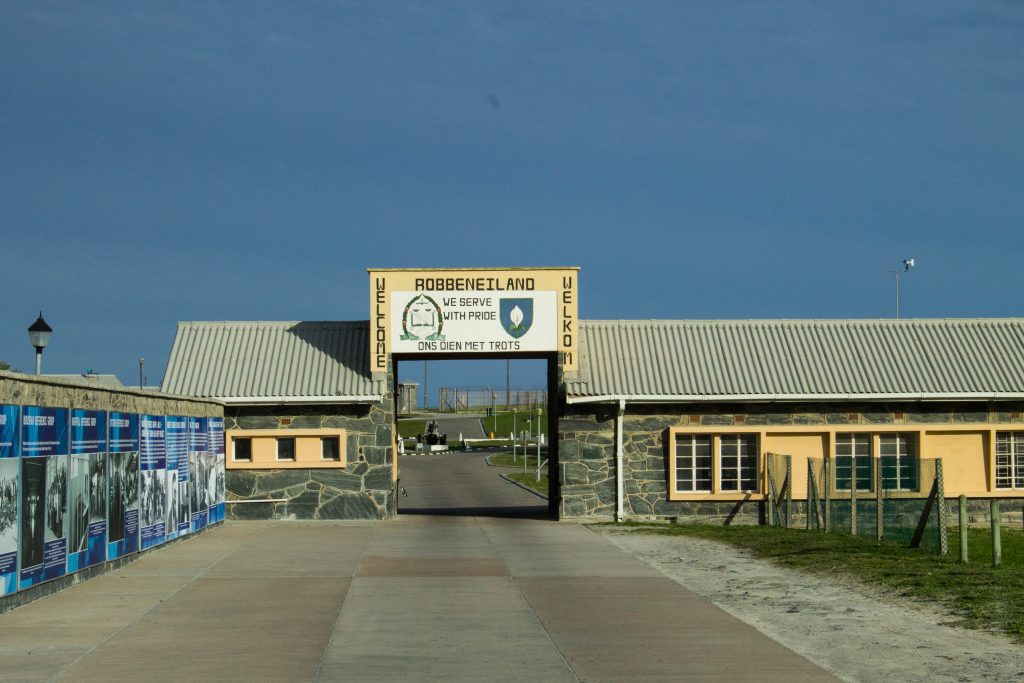In 1671 the Dutch began to imprison convicted criminals on Robben Island. It was only a matter of time before this courtesy was extended to political prisoners and other “undesirables” banished to the Cape from other Dutch colonies. In fact the Dutch government sent kings, princes and religious leaders from the East Indies to Robben Island as prisoners because they did not agree with the Dutch rule in their country.When the British annexed the Cape in 1806 they continued this practice. During the first British occupation of the Cape, from 1795 to 1802, whaling activities were begun in Table Bay, and after their return in 1806 a whaling station was located on Robben Island. However it soon became apparent that this offered convicts an easy escape route, and it was closed down in 1820.
In 1812 the first attempt was made to use the island as an asylum for the mentally ill, and in 1843 the Colonial Secretary, John Montagu, put forward a plan to use it as a colony for lepers, paupers, the mentally unfit and the chronically ill. The plan also provided for the removal of the penal colony to the mainland where convict labour could be used more productively on government projects, such as road-building. This plan was accepted and by 1845 the island had become a home for the Colony’s unwanted and unloved, those deemed to be ‘mentally ill’ in those days could include the homeless, alcoholics, people who were to sick or old to work and prostitutes with sexually transmitted diseases. Those unfortunates were often subjected to treatment, which was unhealthy and inhumane even by the standards of that time, and conditions on the island became the subject of constant complaint from progressive clergy and medical staff. Although some improvements were implemented over time, the island’s lazaretto was only closed down in 1931.
The lighthouse on Robben Island was commissioned in January 1865. The circular tower, designed by the Colonial Engineer, John Scott Tucker, was built in stone quarried locally, and stood 18m high. The 1875 census indicated that Robben Island had a population of 552. In 1891 this number had risen to 702, and by 1904 it stood at 1,460.
After 1931 all the ‘patients’ were sent to hospitals in the Cape and the island began to be used as a military outpost before WW II. Guns were stored there and the government built roads, a power station, a new water supply and houses.
In 1961 it started being used as a prison again. During apartheid many Black people were kept on Robben Island as political prisoners. Former President Nelson Mandela was kept there. The prison internationally notorious for its harsh conditions and when the political prisoners of the apartheid government were released Robben Island became a symbol of the strength of the human spirit.
Robben Island was declared a World Heritage Site because the buildings on the island are a reminder of its sad history and because the same buildings also show the power of the human spirit, freedom and the victory of democracy over oppression.

On our third day into our journey in South Africa, we had the opportunity to visit Robben Island, where Nelson Mandela was imprisoned for 18 years, along with thousands of other political prisoners who opposed the apartheid regime. We started our visit by taking a ferry from the Cape Town waterfront out to the island. The boat ride itself was incredibly fun. Once we had sailed out into the middle of the bay, we had an incredible view of Table Mountain, looming over all of Cape Town. Robben Island itself was a very moving experience. An actual former political prisoner guided us through the prison. It was a very authentic experience to be able to experience the Island through the words of an actual former prisoner. We learned about the quarry where Madiba mined lime stone, as well as the courtyard where he and his fellow prisoners were forced into manual labor. We saw Mandela’s prison cell,a dramatic experience. Seeing the tiny, cold, dark cell where he spent 18 years of his life was incredibly moving. It was very emotional to see in person all of the things that I have read about in Long Walk to Freedom.


